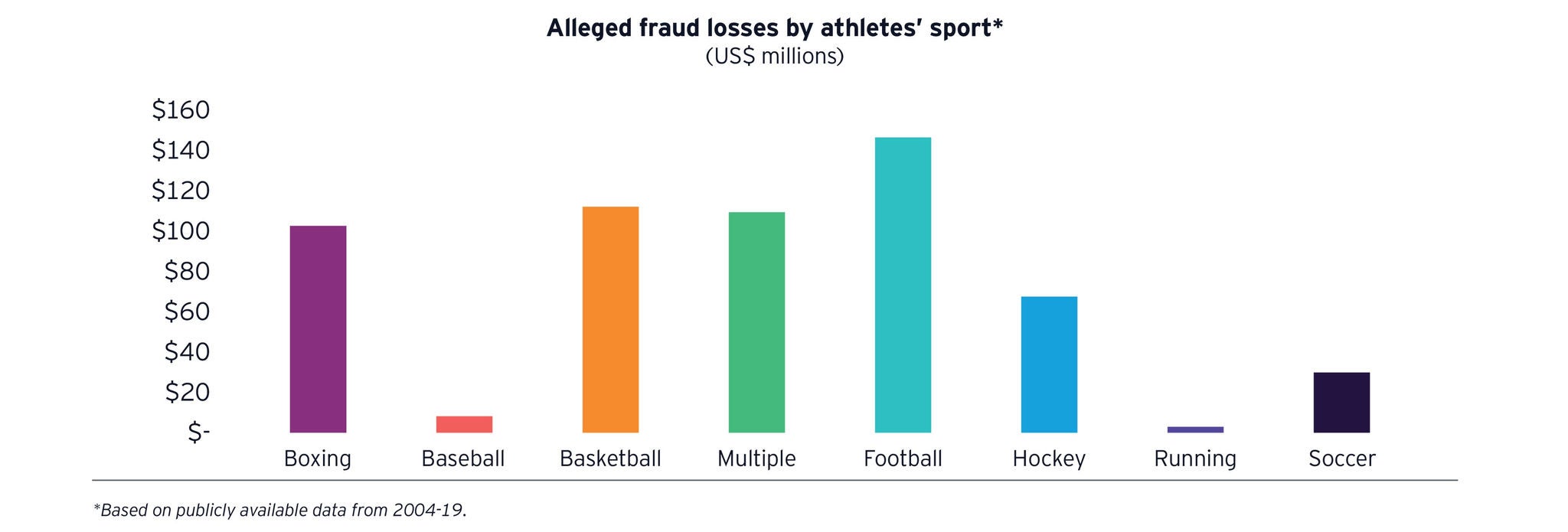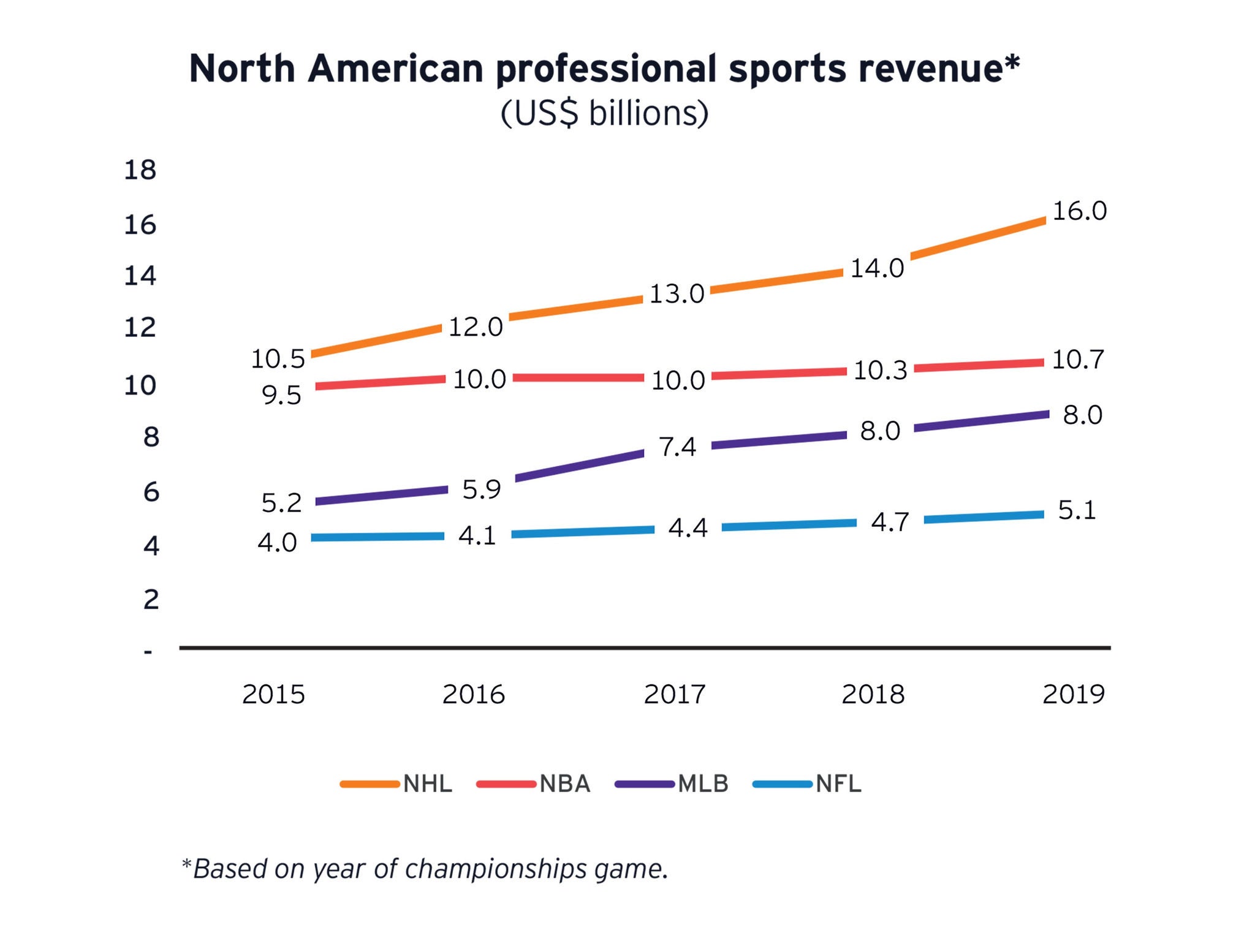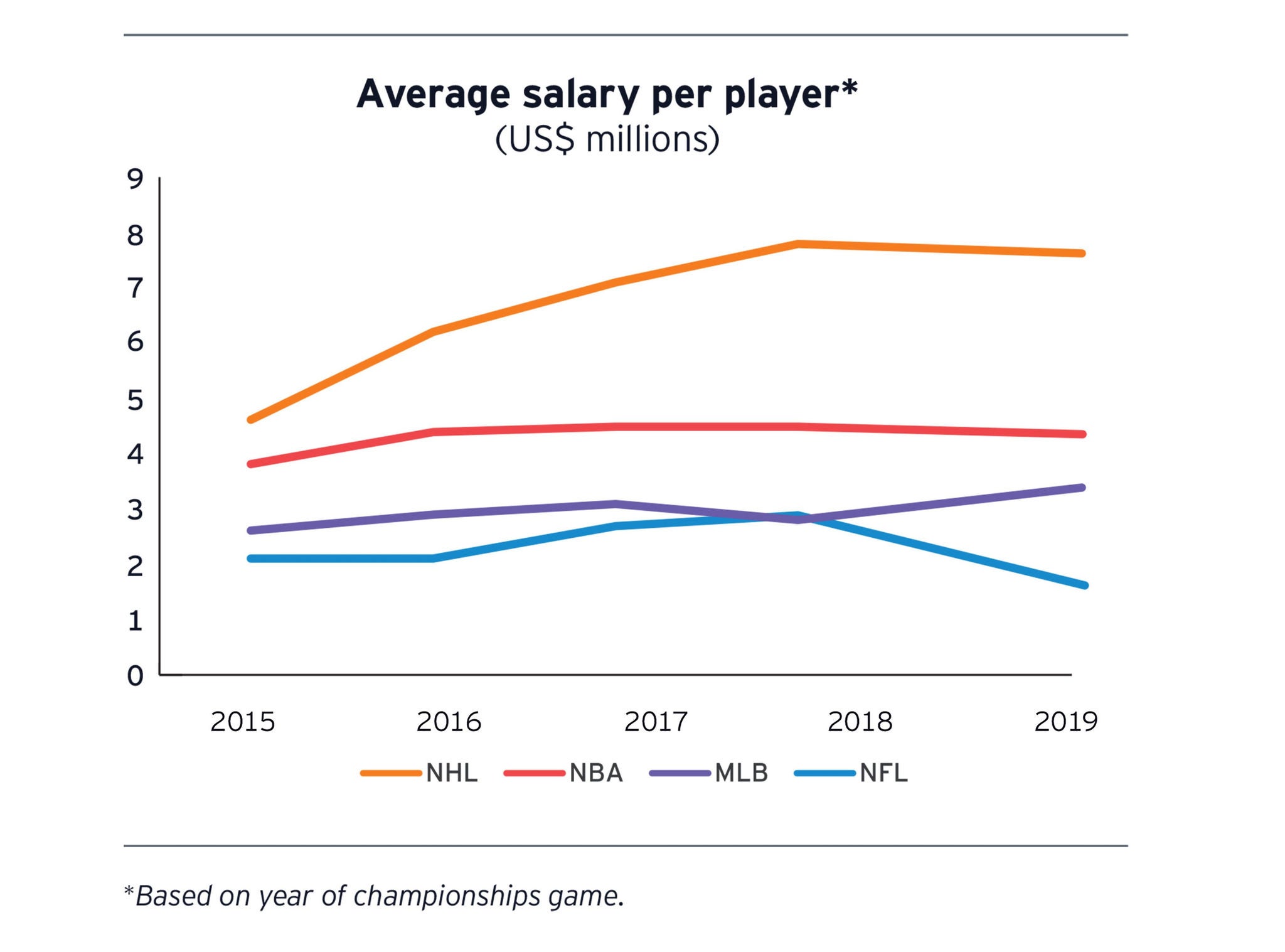EY refers to the global organization, and may refer to one or more, of the member firms of Ernst & Young Global Limited, each of which is a separate legal entity. Ernst & Young Global Limited, a UK company limited by guarantee, does not provide services to clients.

Professional athletes have reported nearly $600 million in fraud-related losses over the last 15 years.
Three questions to consider
- How can an increase in earnings put an athlete at a higher risk of fraud?
- How can athletes protect themselves from fraud?
- Can this trend be reversed?
Athletes targeted by fraud
Money draws criminals like moths to a flame — and today, there may be no more enticing flame than professional sports. It is no surprise, then, that fraudsters consistently target professional athletes. The fraudsters’ success, however, is a bit more surprising: from 2004 through 2019, professional athletes alleged almost $600 million in fraud-related loss.¹ In light of the difficulty in detecting fraud and the reluctance of victims to acknowledge it publicly, ² that’s likely not the half of it.

Even more alarming, that incidence of fraud in sports is trending in the wrong direction, as the number and value of known cases have steadily increased nearly every year for the past decade. Clearly, athletes are becoming a bigger target of fraud.
A record amount of money in sports
The amount of money to be stolen is growing. Industry data analyzed showed record revenues within the sports industry. For an example, look at four of the major professional leagues in North America: Major League Baseball (MLB), the National Basketball Association (NBA), the National Football League (NFL) and the National Hockey League (NHL). All four leagues continue to see record revenues, buoyed by stronger fan interest,³ an explosion in media-rights fees,⁴ expansion and smart monetization strategies in ticketing,⁵ merchandising⁶ and partnerships.⁷
Some financial professionals will promote their ability to increase financial returns, but a good financial professional will be adept at both wealth accumulation and wealth preservation
Download the full article on How can athletes fight the growing risk of being targeted by fraud
Other sports leagues or associations, like Major League Soccer⁸and the Ultimate Fighting Championship (UFC),⁹ have also seen significant revenue growth, as have sports-adjacent industries like agencies,¹⁰ media-rights companies,¹¹ e-sports,¹² gaming and daily fantasy leagues.¹³ In fact, estimated annual revenue across the entire sports industry is expected to rise to $83.1 billion by 2023.¹⁴ That is 31% higher than it was only a few years ago.¹⁵

Why is revenue an important metric? Most professional leagues exhibit a direct or indirect link between revenues and the total amount of player salaries. Since salaries are a primary source of income for athletes, higher salaries increase the size of the target painted on the athletes’ backs.
In 2019, the average salaries of athletes in these four leagues ranged from $1.9 million to $7.7 million, the highest amounts recorded in at least five years. ¹⁶
A professional athlete’s salary often is only one aspect of an athlete’s public-facing brand and net worth. In 2018, thirteen of the highest paid athletes made more money in endorsements than from their annual salary.¹⁷ TIME magazine recognized seven athletes among the most influential people of 2019.¹⁸ Fourteen athletes generated at least 100 million interactions in 2019. Of the 14 athletes, nine were soccer players, including the top four.¹⁹ As athletes have increased their efforts to build diversified brands, fraudsters also have increased their efforts to take a piece of the payout.

What are common fraud schemes against athletes?
Fraud schemes vary, but there is a common theme: the fraud perpetrator gains the athlete’s trust — either directly or through mutual contacts — and leverages the relationship of trust into the fraudster’s own financial windfall. This malfeasance often goes undetected due to limited oversight and the reality that, when compared with the large, steady cash inflows, improper cash outflows and fraudulent investments may not look that unusual.
Fraudsters target industries where earnings are substantial. With the increasing financial success of the sports industry – COVID-19 notwithstanding - the opportunity for fraud increases as more trust is placed on third parties. It is imperative that diligence is conducted and that reputable financial advisers are hired in order manage this risk.
What can athletes do to prevent potential fraud?
First and foremost, athletes should hire reputable, vetted external parties rather than smaller-sized, inexperienced advisors to manage their finances. These parties should be recommended by objective, third-party sources. Some financial professionals will promote their ability to increase financial returns, but a good financial professional will be adept at both wealth accumulation and wealth preservation.
Before entering into any type of professional relationship, an athlete should consider a host of risk areas because individuals often will make many claims or provide credentials that may not be entirely truthful. A critical step an athlete can take to lower their risk is to conduct due diligence on their financial representatives or potential investments in advance. Due diligence may include:
- Background investigations
- Conflict-of-interest checks
- Analysis of relevant documents
- Audit or review of financial reports
- Interviews
- Reference checks
- Investment strategy (and history of success)
- Training and education
- Reputation among others in the industry and other professionals who have worked with them
Summary
Research from the EY Forensics team indicates that as the salary earned by athlete’s continues to increase, so does the amount of money that was stolen. Conducting due diligence on financial representatives or potential investments may help to reverse this trend. In all cases, it is wise to use experienced, reputable, independent third parties to perform these due diligence steps.



